Musty smells in a home can be both unpleasant and persistent, leaving you searching for effective solutions to eliminate them. These odors often indicate excess moisture in the air, which can lead to mold, mildew, and other underlying issues. This is where a dehumidifier comes into play. But does it truly help get rid of musty smells? In this article, we’ll explore the science behind dehumidifiers, how they work to combat humidity, and their role in addressing unpleasant odors. Whether you’re dealing with a stuffy basement, a damp laundry room, or any other moisture-prone space, this guide will provide you with the insights you need to create a fresher, healthier living environment.
How Does a Dehumidifier Work to Get Rid of Musty Smell?
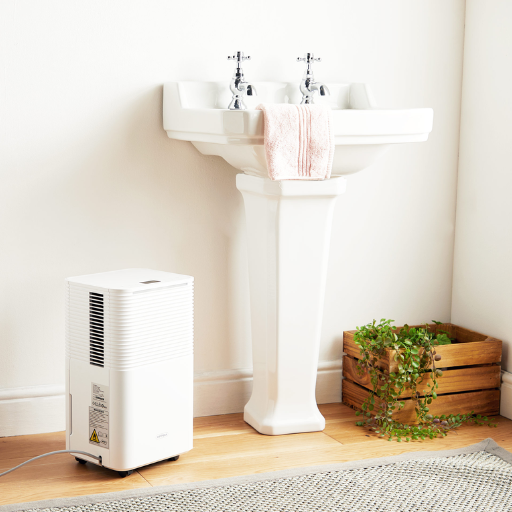
A dehumidifier works to get rid of musty smells by reducing the moisture levels in the air, which helps prevent the growth of mold, mildew, and bacteria—common culprits behind unpleasant odors. By pulling in humid air, extracting the excess water, and releasing drier air back into the room, a dehumidifier creates an environment that is less favorable for these odor-causing agents to thrive. Over time, this process not only eliminates musty smells but also improves overall air quality in the space. Using a dehumidifier consistently in moisture-prone areas, like basements or laundry rooms, is an effective way to maintain a fresher and healthier atmosphere.
Understanding the Role of Humidity in Musty Odor
Humidity plays a pivotal role in fostering the growth of mold, mildew, and bacteria—key contributors to musty odors. When relative humidity levels exceed 60%, the excess moisture in the air creates an ideal breeding ground for these microorganisms to thrive. According to studies, environments with prolonged high humidity can accelerate the onset of mold growth within just 24-48 hours on porous surfaces like wood, fabric, or drywall.
Furthermore, higher humidity contributes to the dampness that amplifies the breakdown of organic materials, such as wood fibers and wall insulation, further exacerbating unpleasant smells. Fluctuating or poorly controlled humidity levels can also lead to condensation, especially on cooler surfaces, which perpetuates moisture-related challenges.
To mitigate these effects, experts recommend maintaining indoor relative humidity levels between 30% and 50%. Dehumidifiers and proper ventilation play critical roles in achieving this balance, ensuring that homes remain fresh, healthy, and free from the persistence of musty odors. Coupled with the systematic removal of water leaks or spills, maintaining optimal humidity is a proactive strategy in combating odor and protecting indoor air quality.
How Removing Moisture Can Eliminate Unpleasant Smell
Excess moisture creates an ideal environment for the growth of mold, mildew, and bacteria, all of which are primary contributors to unpleasant smells in indoor spaces. When relative humidity levels exceed 60%, these microorganisms can thrive rapidly, emitting a musty odor that permeates fabrics, carpets, and walls. A study by the Environmental Protection Agency (EPA) highlights that controlling moisture levels is essential because nearly 30% of indoor odor issues are linked to microbial growth fueled by humidity.
Dehumidifiers are a critical tool in mitigating these smells, as they effectively reduce excess water in the air, keeping the environment below the threshold that supports mold and mildew growth. For instance, a portable dehumidifier can extract up to 50 pints of water per day, depending on the model and environmental conditions, significantly impacting air quality. Meanwhile, ensuring proper ventilation, particularly in rooms like bathrooms, kitchens, or basements, can further prevent moisture buildup by expelling humid air to the outside.
Additionally, proactive measures such as sealing leaks, insulating pipes, or installing vapor barriers in crawl spaces can further diminish potential sources of humidity. Studies suggest that addressing these structural factors can reduce odor-related complaints by up to 40% in residential settings. By combining moisture control technologies and preventative techniques, indoor spaces can remain odor-free, promoting a healthier and more welcoming environment.
The Science Behind Dehumidifier to Remove Musty Smell
Dehumidifiers are designed to extract excess moisture from the air, which is a critical factor in combating musty odors. Musty smells typically originate from the growth of mold and mildew, which thrive in environments with humidity levels above 60%. By maintaining relative humidity between 30% and 50%, dehumidifiers create conditions that inhibit the proliferation of these microorganisms, effectively reducing unpleasant odors.
The mechanism behind a dehumidifier is both simple and efficient. Air is drawn into the device using a fan and passed over refrigerated coils. The cooling process condenses the excess water vapor into liquid form, which is collected in a tank or drained away. The drier air is then reheated and returned to the room, creating a more comfortable and odor-free environment.
Recent data highlights the effectiveness of dehumidifiers in indoor spaces. For example, studies have found that reducing humidity to optimal levels can decrease mold spore concentration by up to 65%, significantly diminishing odor intensity. High-capacity dehumidifiers designed for larger spaces can remove between 50 to 70 pints of moisture per day, depending on room size and atmospheric conditions. Additionally, modern dehumidifiers often include advanced features like hygrometers for precise humidity monitoring, auto-shutoff mechanisms, and HEPA filters to eliminate allergens, contributing to an overall healthier indoor environment.
By addressing the root cause of musty odors—excess moisture—dehumidifiers serve as an invaluable tool for improving air quality, preserving structural integrity, and enhancing living conditions in both residential and commercial settings.
Can a Dehumidifier Help in Basement Odor Control?
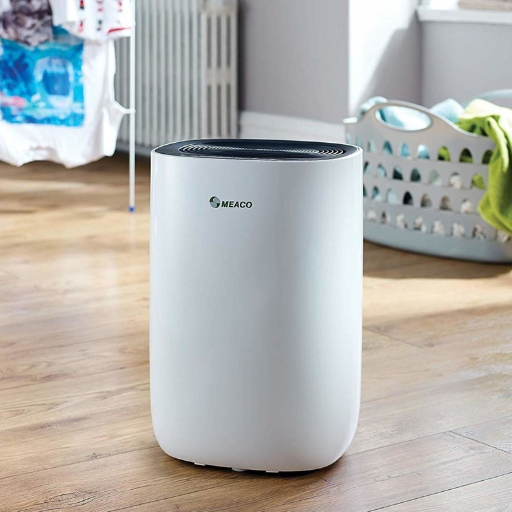
Yes, a dehumidifier can help control basement odors effectively. Basements often have high humidity levels, which create an ideal environment for mold, mildew, and bacteria growth—common sources of unpleasant smells. By reducing excess moisture in the air, a dehumidifier inhibits these growths and improves air quality. This not only eliminates odors but also helps prevent future issues, making it a simple and reliable solution for managing basement odor problems.
Why Basements Are Prone to Musty Odors
Basements are particularly susceptible to musty odors due to a combination of environmental factors and structural conditions. One of the primary reasons is poor ventilation—many basements lack sufficient airflow, allowing odor-causing particles to stagnate and accumulate over time. Additionally, basements are often situated below ground level, where they are surrounded by soil. This positioning makes them prone to higher levels of moisture infiltration through cracks in the foundation, leaky pipes, or condensation, all of which contribute to elevated humidity levels.
According to data from the Environmental Protection Agency (EPA), indoor humidity levels above 60% create an environment ripe for mold and mildew growth. Basements often exceed this threshold, particularly in regions with damp climates. Mold and mildew release microscopic spores into the air, which not only create a musty scent but can also pose health risks to occupants. Furthermore, materials commonly found in basements, such as wood, cardboard boxes, and upholstered furniture, tend to absorb moisture, exacerbating the odor problem. These organic materials can become breeding grounds for mold, bacteria, and fungi, worsening air quality over time.
The lack of natural sunlight is another factor. Sunlight naturally helps to dry out spaces and reduce microbial growth, but basements typically rely on artificial lighting and have minimal exposure to natural light. These combined conditions—restricted airflow, high humidity levels, moisture infiltration, and limited sunlight—all contribute to making basements more prone to persistent musty odors. Addressing these underlying causes is crucial for creating a cleaner, fresher basement environment.
Using a Dehumidifier for Basement Smells
A dehumidifier is an effective tool in addressing the underlying causes of musty odors in basements by reducing excess moisture in the air. High humidity levels, typically exceeding 60%, create an ideal environment for mold, mildew, and bacteria to thrive, which are common contributors to unpleasant smells. By lowering the relative humidity to a recommended range of 30-50%, a dehumidifier helps inhibit the growth of these odor-causing microorganisms.
Modern dehumidifiers are equipped with features like adjustable humidity settings, built-in hygrometers, and continuous drainage options, ensuring precise control over the basement’s air quality. For instance, a 50-pint dehumidifier can extract significant amounts of moisture daily, making it suitable for larger basements, while smaller models ranging from 20-30 pints are ideal for compact spaces with mild dampness.
Studies have shown that maintaining a consistent humidity level in enclosed spaces significantly improves air quality over time, reducing the occurrence of musty smells and protecting stored items from mold damage. Additionally, energy-efficient dehumidifier models with Energy Star certification ensure that moisture control can be achieved with lower electricity consumption, offering a sustainable solution to a long-standing problem.
How to Run a Dehumidifier Effectively in a Basement
To operate a dehumidifier effectively in a basement, it’s essential to consider factors like placement, humidity levels, and regular maintenance. Begin by positioning the dehumidifier centrally or in the dampest part of the basement, ensuring at least 12 inches of space around the unit for proper airflow. Most modern dehumidifiers feature built-in hygrometers, which allow you to monitor and set an ideal humidity level. Experts recommend maintaining a humidity range of 30% to 50% for optimal comfort and to prevent mold growth.
For larger basements or areas subject to significant moisture, select a high-capacity dehumidifier capable of removing up to 50 or 70 pints of moisture per day, depending on the square footage and severity of dampness. If your basement lacks proper drainage, use a model with a built-in pump for continuous drainage into a sink or floor drain, preventing overflow.
Regularly check and clean the air filter, as accumulated dust can hinder efficiency. On average, cleaning the filter every two to three weeks or as recommended by the manufacturer will ensure steady performance. Additionally, during colder months, opt for dehumidifiers designed to function in lower temperatures or equipped with auto-defrost features to avoid freezing coils.
What are the Benefits of Using a Dehumidifier for Odor Removal?
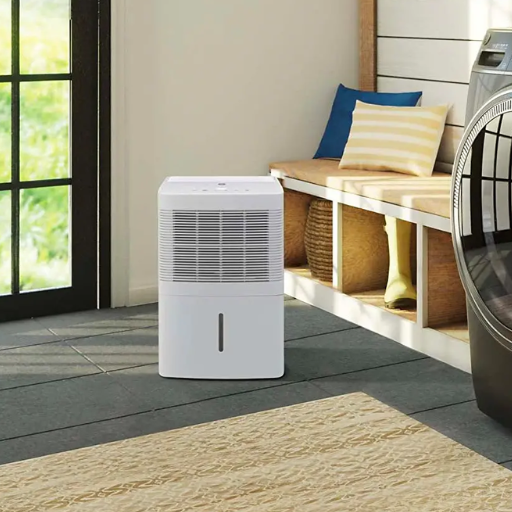
Using a dehumidifier for odor removal offers several key benefits. By reducing excess moisture in the air, it helps prevent the growth of mold and mildew, which are common sources of unpleasant smells. Dehumidifiers also improve overall air quality, making spaces feel fresher and more comfortable. Additionally, addressing dampness in areas like basements, laundry rooms, or bathrooms can eliminate musty odors at the root, providing a long-term solution rather than masking the problem. This makes a dehumidifier an effective and practical tool for maintaining a cleaner and more inviting environment.
Improving Air Quality with a Dehumidifier
Dehumidifiers are highly effective when it comes to improving indoor air quality, especially in regions with high humidity levels. Studies show that maintaining indoor relative humidity between 30% and 50% is optimal for comfort and reducing health risks. Beyond creating a more pleasant environment, controlling humidity can significantly reduce allergens like dust mites, mold spores, and mildew, which thrive in damp conditions. These allergens are known culprits of respiratory issues, including asthma and allergies.
Modern dehumidifiers also come equipped with advanced features, such as HEPA filters, to trap airborne particles like pollen and pet dander. Some models are even designed to consume less energy, providing a cost-efficient solution to improve air quality. With the ability to extract up to 50 pints of water per day in larger spaces, dehumidifiers demonstrate a tangible impact on reducing indoor humidity levels, enhancing comfort, and ensuring a healthier living space.
Preventing Mold and Mildew Growth through Moisture Control and Odor
In order to control the growth of mildew and mold, moisture control is a vital area of concern since they thrive in damp, humid places. Studies state the growth of mold can be impeded if indoor relative humidity is kept below 60%. Dehumidifiers are able to improve this balance because they can lower the moisture content in the air efficiently and to a significant degree. Take, for instance, areas with high humidity such as basements. Keeping the humidity level constantly between 30-50% can greatly aid in mitigating mold.
In addition, the smell of mildew and mold can be incredibly unpleasant and readily permeate their surroundings. Advanced dehumidifiers use carbon filters and ionizers to obliterate airborne odors while ensuring the space is sanitized and smelling fresh. Together with proper cleaning and regular ventilation, these features help reduce the risk of mold problems in the future. Homeowners are able to sustain a healthier and comfortable living environment with the integration of these practices.
Reducing Allergens like Dust Mites with a Dehumidifier
Dust mites can be a huge nuisance, forming one of the most common allergens. They favor areas with high humidity since they soak up water from the air, increasing their population. Humidifiers can help reduce allergic reactions like constant sneezing, coughing, or having itch filled eyes. By maintaining indoor the humidity level between 30-50%, dust mites can be significantly reduced. Recent studies indicate the reduction of humidity below 50% can cause even 50% decrease in dust mites and their activities since they cannot sustain dry conditions for long.
The moisture regulation settings on modern dehumidifiers allow precise control for humidity levels and help in reduction of allergens, catering to specific household needs. For example, a HEPA filter along with dehumidifiers can further filter airborne materials such as dust and pollutants, providing better quality air for the users. This combined strategy proves to be effective while dealing with asthma and allergic reactions, providing cleaner and healthier indoor conditions.
These strategies focus not only providing long term health benefits for the family by improving overall comfort, but also reducing exposure to allergens as well.
How to Choose the Right Dehumidifier for Your Home?
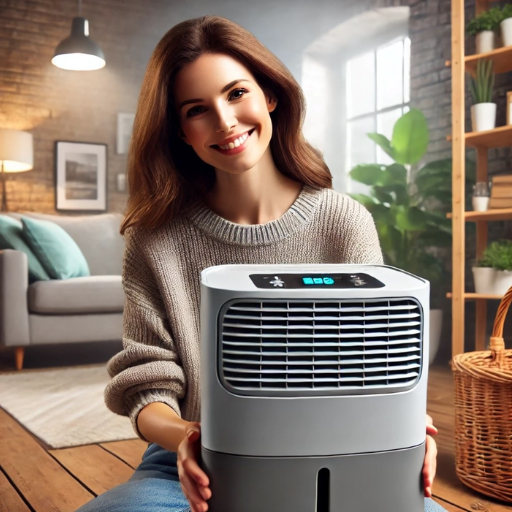
When choosing the right dehumidifier for your home, consider the following key factors:
- Room Size: Determine the size of the space you need to dehumidify. Smaller rooms may only require a compact unit, while larger areas or basements will need a higher-capacity dehumidifier.
- Humidity Levels: Evaluate the humidity levels in your home. High-moisture areas, such as basements or bathrooms, benefit from dehumidifiers with greater moisture removal capabilities.
- Tank Capacity and Drainage Options: A larger tank will reduce the frequency of emptying. For added convenience, some models offer continuous drainage with a hose connection.
- Energy Efficiency: Look for an Energy Star-certified unit to help lower energy costs while maintaining excellent performance.
- Additional Features: Consider useful features like a built-in humidistat, digital controls, or programmable timers for more precise and user-friendly operation.
By matching a dehumidifier’s specifications to your home’s needs, you can ensure effective moisture control and a healthier living environment.
Factors to Consider When You Buy a Dehumidifier
When selecting the ideal dehumidifier for your home, it is important to evaluate all relevant factors to make an informed decision. Below is a detailed breakdown:
- Capacity: Dehumidifiers are rated by how much moisture they can remove in a 24-hour period, typically measured in pints. For small rooms with slight dampness, a 20-30 pint unit is usually sufficient. For larger, wetter spaces like basements, consider units rated for 50-70 pints.
- Area Coverage: Review the manufacturer’s specifications for square footage coverage. Small units are ideal for areas under 500 square feet, while large-capacity models can handle spaces up to 4,500 square feet or more, depending on the design.
- Humidity Control Settings: Opt for a dehumidifier with adjustable humidity level controls. A range of 30-50% relative humidity is typically recommended for most indoor environments to balance comfort and prevent mold growth.
- Tank vs. Continuous Drainage: Units with removable water tanks require periodic emptying, while models offering a continuous drainage option with a hose can eliminate manual maintenance, making them ideal for prolonged use.
- Noise Levels: Consider the dehumidifier’s decibel rating, especially if you plan to use it in living areas or bedrooms. Quiet models generally operate below 50 decibels, ensuring minimal disruption.
- Energy Efficiency: Energy-efficient models with Energy Star certification can reduce electricity usage by up to 30%, saving on utility bills while maintaining effective performance.
- Portability and Size: Look for lightweight models with handles or caster wheels if you plan to move the unit between rooms. Compact designs can fit easily into tight spaces but may offer lower capacity.
- Filter Maintenance: Many dehumidifiers feature washable or replaceable air filters that trap dust and allergens. Regular maintenance ensures continued performance and cleaner indoor air.
- Temperature Compatibility: If you need a dehumidifier for a colder environment such as a basement, choose one with low-temperature operation and auto-defrost features to prevent frost buildup on coils.
- Additional Features:
-
- Digital Displays for precise settings and monitoring
- Built-in Hygrometers to measure humidity levels
- Auto Shut-Off Functions when the tank is full
- Timer Settings for scheduled operation
By carefully considering these factors and analyzing your specific needs, you can select a dehumidifier that optimally balances effectiveness, convenience, and energy efficiency.
Portable vs. Whole-House Dehumidifier: Which is Better?
When determining whether a portable or whole-house dehumidifier is the right choice, understanding their functionality, advantages, and limitations is crucial. A portable dehumidifier is typically compact, easy to move, and designed to manage humidity in specific areas, such as a bedroom, basement, or small apartment. These units generally have a moisture removal capacity ranging from 20 to 70 pints per day, making them suitable for tackling localized humidity issues. Additionally, they tend to be more affordable upfront, with prices ranging from $150 to $500, depending on the size and features.
On the other hand, whole-house dehumidifiers are integrated into a home’s HVAC system, offering comprehensive humidity control throughout the entire living space. These units are ideal for larger residences or environments with persistent, widespread humidity problems. Whole-house dehumidifiers have a higher moisture removal capacity, often exceeding 95 pints per day, and are designed for long-term efficiency. While the initial investment is higher, usually between $1,000 and $3,000 (including installation), these systems operate quietly, require less frequent maintenance, and can contribute to better air quality and energy efficiency by reducing the strain on cooling systems.
The decision primarily depends on the size of the space, budget, and specific humidity challenges in your home. Portable units are perfect for flexibility and focused solutions, while whole-house systems offer a seamless, energy-efficient option for comprehensive humidity control. Evaluating factors such as energy consumption, maintenance requirements, and long-term costs will help you make the best choice for your needs.
Setting the Right Humidity Level for Odor Reduction
Maintaining the optimal humidity level is crucial for reducing odors and ensuring a fresh indoor environment. Studies suggest that keeping indoor humidity levels between 30% and 50% is ideal for minimizing the growth of mold, mildew, and bacteria—common sources of unpleasant odors. Higher humidity levels, above 60%, create a favorable environment for these microorganisms to thrive, while excessively low humidity can contribute to dryness that exacerbates certain smells, like pet odors or smoke.
Using a reliable hygrometer to monitor humidity levels helps you stay within the recommended range. For spaces with persistent odor issues, dehumidifiers can play a vital role in pulling excess moisture from the air, particularly in areas such as basements or bathrooms where poor ventilation promotes the accumulation of dampness. Additionally, ventilating areas with fans and windows while using air purifiers with activated carbon filters can further help target odors at the source by improving air circulation and capturing odor particles.
According to recent reports, homes that maintain balanced humidity conditions not only smell fresher but also experience fewer instances of damage to wood furniture, flooring, and walls caused by excess moisture. By proactively managing indoor humidity, you can create a healthier, more comfortable, and odor-free living space.
Are There Any Alternatives to a Dehumidifier for Musty Odor Removal?
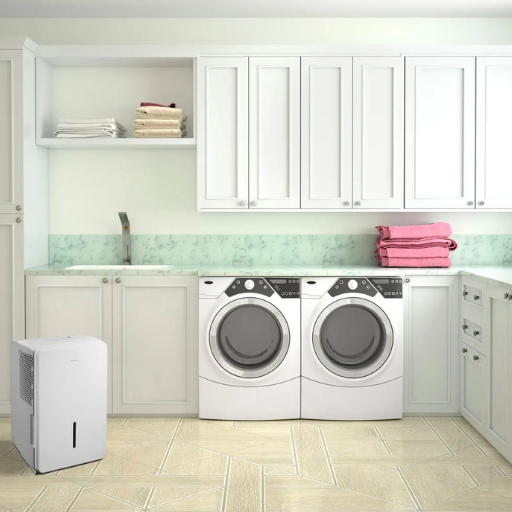
Yes, there are alternatives to a dehumidifier for removing musty odors. Improving ventilation is one of the simplest methods—opening windows or using exhaust fans helps to reduce moisture in the air and dispel odor. Baking soda can also be an effective, natural odor absorber when placed in affected areas like closets, basements, or corners of rooms. Charcoal-based odor absorbers, such as activated charcoal bags or briquettes, are another efficient option, as they are known to trap moisture and neutralize smells. Additionally, using an air purifier with a carbon filter can help to eliminate musty odors by capturing airborne particles. Regular cleaning and addressing the source of moisture—such as fixing leaks or drying wet areas—are also key to long-term odor prevention.
Natural Ways to Get Rid of Musty Smell
To get rid of a musty smell naturally, I usually start by improving ventilation, like opening windows or using fans to circulate fresh air. I place bowls of baking soda or white vinegar around the affected areas to absorb odors effectively. Activated charcoal is another go-to solution, as it’s great at neutralizing smells. To tackle moisture, I might use a homemade dehumidifier, like a bucket filled with rock salt. Lastly, I stay proactive by regularly cleaning and addressing any moisture issues to prevent the smell from returning.
Using Air Purifiers Alongside Dehumidifiers for Best Results
Using air purifiers and dehumidifiers together can significantly enhance indoor air quality while addressing both particulate and moisture-related concerns. Air purifiers focus on eliminating airborne pollutants such as dust, pollen, mold spores, and pet dander through advanced filtration systems like HEPA filters, while dehumidifiers maintain optimal humidity levels by reducing excess moisture in the air. When used in tandem, these devices create a complementary system that promotes a healthier living environment.
A study from the Environmental Protection Agency (EPA) highlights that maintaining indoor humidity between 30-50% can reduce the growth of mold and dust mites, which thrive in damp conditions. Dehumidifiers excel at achieving this balance, while air purifiers target remaining allergens and pollutants. Research also supports the effectiveness of high-efficiency particulate filters in capturing up to 99.97% of particles as small as 0.3 microns, offering relief for individuals with respiratory conditions like asthma or allergies.
This combination proves particularly effective in high-humidity environments, such as basements or regions with a tropical climate, where both mold growth and airborne allergens are more prevalent. For maximum impact, placement matters—position dehumidifiers in moisture-prone areas and air purifiers in commonly-used spaces to ensure optimal air circulation and pollutant removal. By leveraging the strengths of both devices, homeowners can create a dynamic and comprehensive solution for clean, breathable indoor air.
Reference Sources
-
Desiccant Wheels as Gas-Phase Absorption Air Cleaners2:
- Methodology: Experiments were conducted using a silica-gel desiccant wheel in a ventilation system to treat recirculated airflow. The study used Proton-Transfer-Reaction Mass Spectrometry (PTR-MS) and sensory assessments.
- Findings: The desiccant wheel effectively removed over 94% of volatile organic compounds (VOCs) and reduced sensory pollution by 80%. The percentage of dissatisfied individuals with air quality dropped from 70% to 20%. This highlights the potential of dehumidifiers with desiccant wheels in improving air quality and reducing odors.
-
Efficient Control of Odors and VOC Emissions via Activated Carbon Technology3:
- Methodology: This study evaluated the efficiency of carbon scrubbers in controlling odors and VOCs in wastewater treatment facilities.
- Findings: While not directly focused on dehumidifiers, the study emphasized the importance of relative humidity in odor control, which is relevant to dehumidifier applications. Activated carbon systems showed high efficiency in removing odorous compounds and VOCs.
-
A Study on the Persuasive Function of Metadiscourse in Hotel Responses to Negative Reviews1:
- Context: This study mentioned the use of dehumidifiers in hotel rooms to address mold smells but noted that they were not always effective in eliminating odors. It highlights the limitations of dehumidifiers in certain scenarios.
Frequently Asked Questions (FAQs)
Q: Can a dehumidifier get rid of smells in my home?
A: Yes, a dehumidifier can be an effective tool to help remove bad smells in your home. By removing excess moisture from the air, it reduces the ground for mold and mildew, which often contribute to musty smells.
Q: How does a dehumidifier help eliminate musty smells?
A: Dehumidifiers can remove excess moisture from the air, which helps eliminate the musty smells often associated with high humidity levels. By maintaining optimal humidity, they reduce the likelihood of mold growth and musty odors.
Q: Does using a portable dehumidifier help get rid of smells in specific rooms?
A: Yes, using a portable dehumidifier in specific areas of your home can help effectively remove bad smells by targeting excess moisture in those rooms, thereby reducing the conditions that contribute to musty smells.
Q: How long should I let the dehumidifier run to get rid of odors?
A: It depends on the humidity level and the severity of the odors. Typically, running a dehumidifier continuously until the desired humidity level is reached will help reduce musty smells and improve the overall home smell.
Q: Can a dehumidifier to get rid of mold or mildew smells?
A: A dehumidifier can help eliminate mold or mildew smells by removing moisture, which is essential for mold growth. However, it is also important to clean any existing mold to effectively remove the odor.
Q: Will a dehumidifier running all day increase my electricity bill?
A: While running a dehumidifier continuously can contribute to higher electricity usage, many modern dehumidifiers are energy-efficient. It’s advisable to use a dehumidifier with an adjustable humidistat to maintain efficiency.
Q: Is an air dehumidifier necessary for every home to get rid of musty smells?
A: Not every home may require a dehumidifier. However, in areas with high humidity, using an air dehumidifier can be beneficial to reduce musty smells and prevent mold growth.
Q: Are there alternative methods to reduce musty smells without a dehumidifier?
A: Yes, improving ventilation, using air purifiers, and regularly cleaning areas prone to moisture can help reduce musty smells. However, a dehumidifier is often more effective in consistently controlling humidity levels.
Q: Can a dehumidifier be used in conjunction with other odor removal methods?
A: Yes, using a dehumidifier along with other methods like air fresheners, cleaning, and proper ventilation can enhance the effectiveness of odor elimination strategies in your home.



